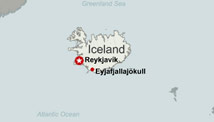I will try to post more green wash meditations but let us consider how bad things can get here at times. This is an event I was actually unaware of and it’s coolness is pretty high.
Authors: Trudy E. Bell & Dr. Tony Phillips | Editor: Dr. Tony Phillips | Credit: Science@NASA
http://science.nasa.gov/science-news/science-at-nasa/2008/06may_carringtonflare/
A Super Solar Flare
May 6, 2008: At 11:18 AM on the cloudless morning of Thursday, September 1, 1859, 33-year-old Richard Carrington—widely acknowledged to be one of England’s foremost solar astronomers—was in his well-appointed private observatory. Just as usual on every sunny day, his telescope was projecting an 11-inch-wide image of the sun on a screen, and Carrington skillfully drew the sunspots he saw.
 Right: Sunspots sketched by Richard Carrington on Sept. 1, 1859. Copyright: Royal Astronomical Society: more.
Right: Sunspots sketched by Richard Carrington on Sept. 1, 1859. Copyright: Royal Astronomical Society: more.
On that morning, he was capturing the likeness of an enormous group of sunspots. Suddenly, before his eyes, two brilliant beads of blinding white light appeared over the sunspots, intensified rapidly, and became kidney-shaped. Realizing that he was witnessing something unprecedented and “being somewhat flurried by the surprise,” Carrington later wrote, “I hastily ran to call someone to witness the exhibition with me. On returning within 60 seconds, I was mortified to find that it was already much changed and enfeebled.” He and his witness watched the white spots contract to mere pinpoints and disappear.
It was 11:23 AM. Only five minutes had passed.
Just before dawn the next day, skies all over planet Earth erupted in red, green, and purple auroras so brilliant that newspapers could be read as easily as in daylight. Indeed, stunning auroras pulsated even at near tropical latitudes over Cuba, the Bahamas, Jamaica, El Salvador, and Hawaii.
|
|
Even more disconcerting, telegraph systems worldwide went haywire. Spark discharges shocked telegraph operators and set the telegraph paper on fire. Even when telegraphers disconnected the batteries powering the lines, aurora-induced electric currents in the wires still allowed messages to be transmitted.
“What Carrington saw was a white-light solar flare—a magnetic explosion on the sun,” explains David Hathaway, solar physics team lead at NASA’s Marshall Space Flight Center in Huntsville, Alabama.
Now we know that solar flares happen frequently, especially during solar sunspot maximum. Most betray their existence by releasing X-rays (recorded by X-ray telescopes in space) and radio noise (recorded by radio telescopes in space and on Earth). In Carrington’s day, however, there were no X-ray satellites or radio telescopes. No one knew flares existed until that September morning when one super-flare produced enough light to rival the brightness of the sun itself.
“It’s rare that one can actually see the brightening of the solar surface,” says Hathaway. “It takes a lot of energy to heat up the surface of the sun!”
Above: A modern solar flare recorded Dec. 5, 2006, by the X-ray Imager onboard NOAA’s GOES-13 satellite. The flare was so intense, it actually damaged the instrument that took the picture. Researchers believe Carrington’s flare was much more energetic than this one.
The explosion produced not only a surge of visible light but also a mammoth cloud of charged particles and detached magnetic loops—a “CME”—and hurled that cloud directly toward Earth. The next morning when the CME arrived, it crashed into Earth’s magnetic field, causing the global bubble of magnetism that surrounds our planet to shake and quiver. Researchers call this a “geomagnetic storm.” Rapidly moving fields induced enormous electric currents that surged through telegraph lines and disrupted communications.
:}
Here is a really good article on it. I am posting a chunk of it not covered above.
http://passingstrangeness.wordpress.com/2009/04/15/the-carrington-flare/
The Carrington Flare
As it happened, a second member of the Royal Astronomical society (another Richard, this one the otherwise-obscure Richard Hodgson in London), also saw the flare and so proved conclusively that there was nothing wrong with Carrington’s equipment. By the time this was realized, though, it was already pretty clear that something truly odd had happened—something rattled the Earth’s atmosphere the next day, as described above.
The connections between light, magnetism, and electricity were still incompletely understood in 1859 (James Clerk Maxwell would not entirely coincidentally publish his tour de force on the subject over the next few years), but Michael Faraday had already discovered the Law of Induction. Shorn of mathematics, it provided for the creation of electricity if a piece of metal cuts across a magnetic field or the field instead cuts over the metal. That was the connection between the strange readings at Kew and the telegraphic events around the world. The enormous auroras were symptomatic of huge fluctuations in the Earth’s magnetic field, and those fluctuations were playing across the world’s 200,000 kilometers of telegraph wire. By analyzing the directions followed by wires and comparing them to the effects that occurred at their stations, it was even possible to develop a rough idea of how the fluctuations had flowed around the planet.
Though the correlation between sunspots and the fluctuations of Earth’s magnetic field had already been discovered by Edward Sabine, this was the first really solid evidence that the Sun could reach out to the Earth with something other than light or gravity. Conservative by nature, Carrington himself didn’t commit to a connection between his flare and the electromagnetic storm, but now we know that the Sun throws off coronal mass ejections consisting of protons and electrons (the first having been observed in 1971). We even know for sure that the 1859 event was caused by one, despite the more than a century since it occurred; protons and electrons expelled by the Sun move quickly, but not anything like the speed of light, so that accounts for the delay between Carrington seeing his flare and the beginning of the auroras.
The clincher can be found on one of the charts linked to previously. There’s a “fishhook” shape (marked with an arrow labeled “D: Solar Flare Effect”) in the bottom trace. That’s called a magnetic crochet, and it’s the characteristic bump in the Earth’s magnetic field caused by X-rays from the coronal mass ejection ionizing part of our atmosphere. X-rays move at the speed of light, outpacing the charged particles following them—and it takes eight minutes to get from the Sun to the Earth at that speed. As closely as can be told from the relatively crude instrumentation that drew the track (hours are listed at the top of the same chart), the crochet occurred within the same time frame as Carrington’s closely timed 11:18 observation of the flare. So we have both a delayed effect from the slow stream of charged particles and a high-speed effect moving at light speed; a coronal mass ejection fits the bill exactly.
:}
The Wikki article is kinda lame:
http://en.wikipedia.org/wiki/Richard_Christopher_Carrington
Richard Christopher Carrington
From Wikipedia, the free encyclopedia
| Richard Christopher Carrington | |
|---|---|
| Born | 26 May 1826 Chelsea, London, England |
| Died | 27 November 1875 (aged 49) Churt, England |
| Nationality | English |
| Fields | Astronomy |
| Known for | Solar observations |
| Notable awards | Gold Medal of the Royal Astronomical Society in 1859 |
Richard Christopher Carrington (26 May 1826 – 27 November 1875) was an English amateur astronomer whose 1859 astronomical observations first corroborated the existence of solar flares as well as their electrical influence upon the Earth and its aurorae; and whose 1863 records of sunspot observations demonstrated differential rotation in the Sun.
:}
It’s amazing how far we have come…but the Oil Gusher shows how far we have to go..
:}



![[Article Image]](http://s3.amazonaws.com/the_mark/wide_photos/1494/original.jpg?1273693702)








 Permafrost in Siberia. Methane emissions from the Arctic permafrost increased by 31% from 2003-07, figures show. Photograph: Francis Latreille/Corbis
Permafrost in Siberia. Methane emissions from the Arctic permafrost increased by 31% from 2003-07, figures show. Photograph: Francis Latreille/Corbis
